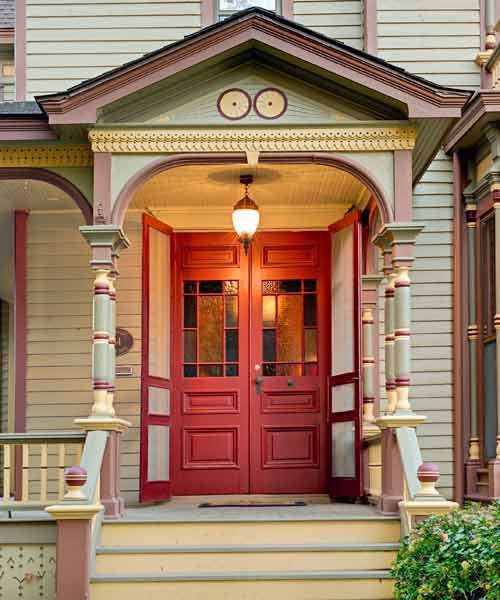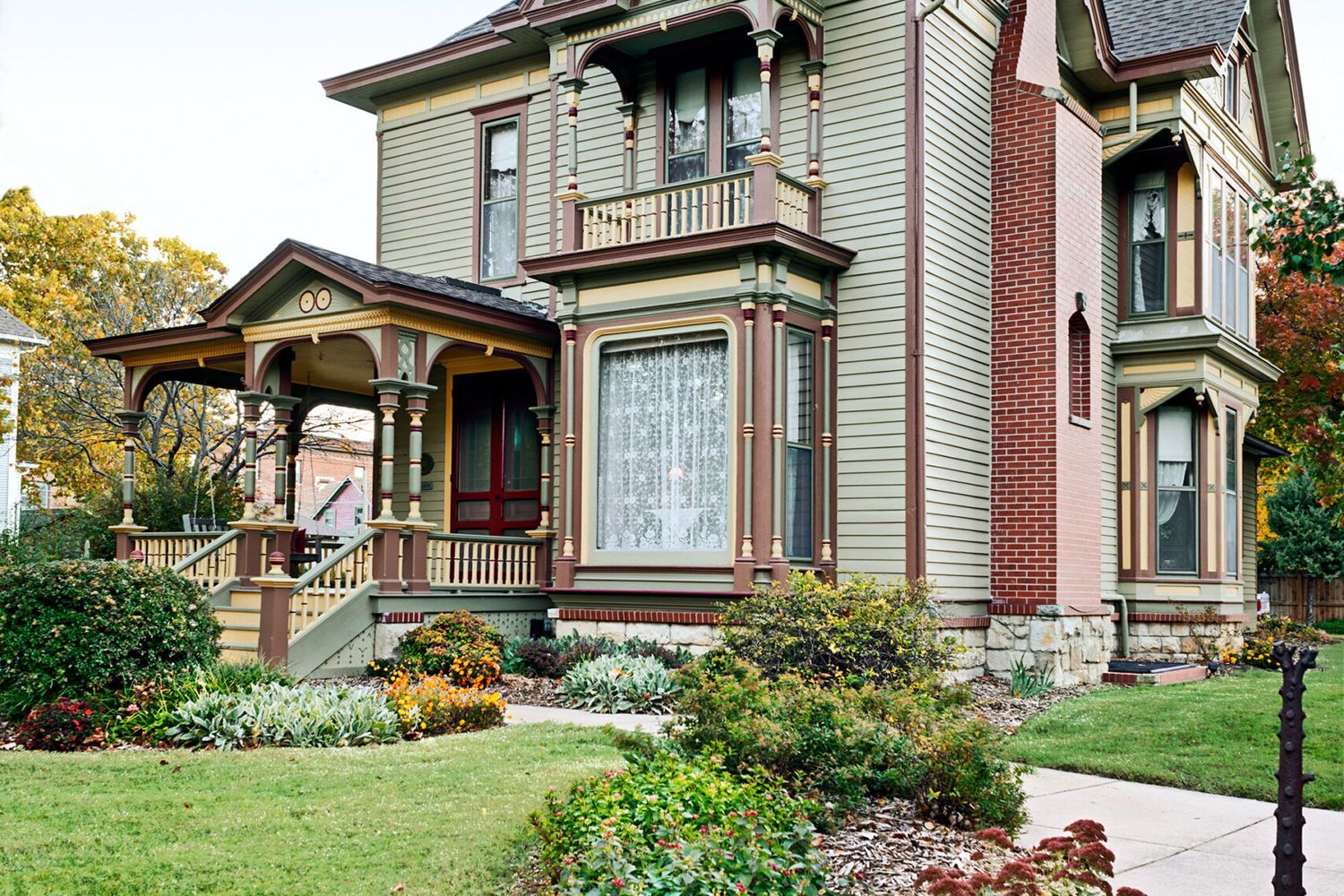Embarking on a fixer-upper project can be both exciting and overwhelming. It’s a chance to customize your home and make your mark with finishing details you love. It’s also a chance to make a lot of mistakes that can cost you time, money, and frustration. This guide, along with expert craftsman Chip Wade, a consultant with Liberty Mutual Insurance, offers tips for tackling a whole-house fixer-upper successfully.
What Should You Look for When Buying a Fixer-Upper?
Before renovating, we recommend carefully assessing your fixer-upper. This evaluation will help you prioritize projects, budget effectively, and determine which aspects you can handle on your own versus those that require professionals. You can divide your evaluation into two main areas: structural issues and cosmetic updates.

Structural Issues To Identify
When evaluating a fixer-upper, start by looking at these major structural areas:
- Foundation integrity: Look for cracks, unevenness, or signs of water damage.
- Roof condition: Check for missing shingles, sagging, or leaks.
- Electrical system: Make sure the wiring is up to code and can handle modern appliances.
- Plumbing: Inspect for leaks, outdated pipes, or poor water pressure.
- Load-bearing walls: Identify any that may need reinforcement or repair.
If you’re unsure how to assess these issues, we strongly recommend hiring a professional home inspector to provide a detailed report.
Cosmetic Updates To Incorporate
While structural issues take priority, still budget for the cosmetic aspects of your fixer-upper. These updates can significantly improve your home’s appearance and value.
- Paint: A fresh coat can quickly transform both interior and exterior spaces.
- Flooring: Consider replacing worn carpets or refinishing old hardwood floors.
- Kitchen and bathroom fixtures: Updating these can be an easy way to modernize your home.
- Landscaping: Enhance curb appeal with some colorful plants and fresh lawn care.
- Lighting: Improve ambience and functionality with new light fixtures.
Cosmetic updates are often more manageable for DIY enthusiasts and can provide immediate visual impact.
Creating a Fixer-Upper Renovation Plan
Having a solid plan upfront will go a long way in helping you stay on budget and on track time-wise as the project progresses.
Setting Priorities and Timelines
Start by listing all necessary renovations and improvements. Then, prioritize these tasks based on urgency, budget, and personal preferences. Think about the following factors when setting priorities:
- Safety concerns: Address any issues that pose immediate risks.
- Seasonal conditions: Plan exterior work during favorable weather.
- Living arrangements: Determine which projects allow you to live in the home during renovations.
- Budget constraints: Balance must-have repairs with nice-to-have upgrades.
Create a realistic timeline for each project, allowing for unexpected delays and challenges.
Budgeting for Unexpected Costs
When renovating a fixer-upper, it’s wise to budget for unforeseen expenses. We recommend setting aside 10%–20% of your budget for unexpected budget-busters such as these:
- Hidden damage: You may discover issues such as mold or termites after starting renovations.
- Additional permit fees: While you should expect permit fees for proposed work, you may find issues as you go that require further permitting to address.
- Material price fluctuations: Allow for potential increases in material costs.
- Temporary housing: Budget for alternative living arrangements if needed during renovations.
By planning for these contingencies, you’ll be better prepared to handle surprises without derailing your project.
Fixer-Upper Renovation: Where to Begin?
You may want to start with the outside of your home so it at least makes a nice outward impression. Focus on these two key areas to make a strong initial impact.
Upgrading the Front Entrance
The front entrance sets the tone for your entire home. Start by painting the front door with a bold color that complements your home’s exterior, instantly refreshing the space. Update hardware, such as doorknobs, knockers, and house numbers, for a polished and inviting look.
Improve visibility and curb appeal by adding exterior sconces or pendant lights, and guide visitors to your door with a defined path using pavers or stepping stones. Incorporate planters with colorful flowers or greenery to frame the entrance.
Refreshing the Garage Exterior
The garage is a prominent feature of a home’s facade. Start by painting or replacing the garage door with a style that complements your home’s architecture. Adding decorative hardware, such as handles or hinges, can give the door a custom touch, while exterior sconces can improve visibility and security.
For added charm, consider building a simple pergola over the garage door. You can soften the structure’s appearance by landscaping around the garage with shrubs or flowers.
Tackling Interior Renovations
Focus first on high-impact areas such as kitchens and bathrooms and on overall flooring and paint choices.
Kitchen and Bathroom Upgrades
Updated kitchens and bathrooms are known to offer the highest return on investment for renovations. Start by replacing outdated appliances with energy-efficient models to boost functionality and reduce utility costs. Refinishing or replacing cabinet doors and hardware can give these spaces a fresh, modern look.
Installing new countertops and backsplashes adds style and value, while updating plumbing fixtures, such as faucets and showerheads, can enhance appearance and performance. Improving lighting with a mix of task and ambient options helps these areas stay well-lit and functional. When planning these renovations, balance your desired aesthetic with practical considerations such as durability and easy maintenance.
Flooring and Paint Considerations
When selecting flooring, choose durable materials that suit each room’s use. In high-traffic areas, opt for low-maintenance options such as luxury vinyl plank or tile.
For paint, select a cohesive color palette that flows seamlessly throughout the home, using different finishes strategically, such as semi-gloss in kitchens and bathrooms for easy cleaning. Don’t overlook ceilings, as a fresh coat of paint can significantly brighten a room. If you’re fixing up a home to sell, remember that neutral colors appeal to a broader range of potential buyers.
Addressing Major Systems and Infrastructure
Electrical, plumbing, HVAC, and insulation improvements will make the biggest impact on your fixer-upper’s comfort, functionality, and value.
Electrical and Plumbing Updates
Outdated electrical and plumbing systems can pose safety risks and hinder your home’s functionality. Below are some musts to check off:
- Upgrade the electrical panel to accommodate modern power needs.
- Replace outdated wiring and add GFCI outlets in wet areas.
- Replace old pipes with modern materials to improve water quality and pressure.
You may also want to install smart home features such as programmable thermostats or lighting controls. You could opt for water-saving fixtures to reduce utility costs. For safety and code compliance, always consult licensed professionals.
HVAC and Insulation Improvements
Efficient heating, cooling, and insulation have a big impact on your home’s comfort and energy costs. Consider these updates:
- Replace an aging HVAC system with an energy-efficient model.
- Seal ductwork to improve system efficiency.
- Add or upgrade insulation in walls, attics, and crawl spaces.
- Install double-pane windows to reduce heat transfer.
- Add a whole-house fan or attic ventilation to improve air circulation.
These improvements can lead to substantial energy savings throughout the year.
DIY vs. Professional Renovations
When deciding whether to tackle a project yourself or hire a professional, weigh your skills, available time, and the complexity of each task.
With proper research and preparation, many homeowners can successfully tackle projects such as painting interior walls and ceilings, installing new light fixtures or ceiling fans, replacing cabinet hardware or doorknobs, laying peel-and-stick tile or vinyl flooring, and doing basic landscaping and gardening.
Certain projects demand more specialized skills or licenses. We recommend hiring professionals for tasks such as structural repairs or modifications, electrical and plumbing work, HVAC installation or major repairs, roof replacement or significant repairs, and large-scale landscaping or hardscaping.
Maximizing Your Fixer-Upper’s Potential
To get the most out of your fixer-upper, focus on renovations that add value and prepare your home for the future.
These improvements typically offer better returns on investment:
- Kitchen and bathroom remodels
- Adding a deck or patio
- Replacing the front door
- Installing energy-efficient windows
- Creating an open floor plan
- Including a home office or flexible workspace
Research local real estate trends to understand the most desirable features in your area.
If you don’t plan to redo the entire house, creating a master renovation plan can help increase its value. Sharing the blueprints with potential buyers will help them envision the property’s potential.

